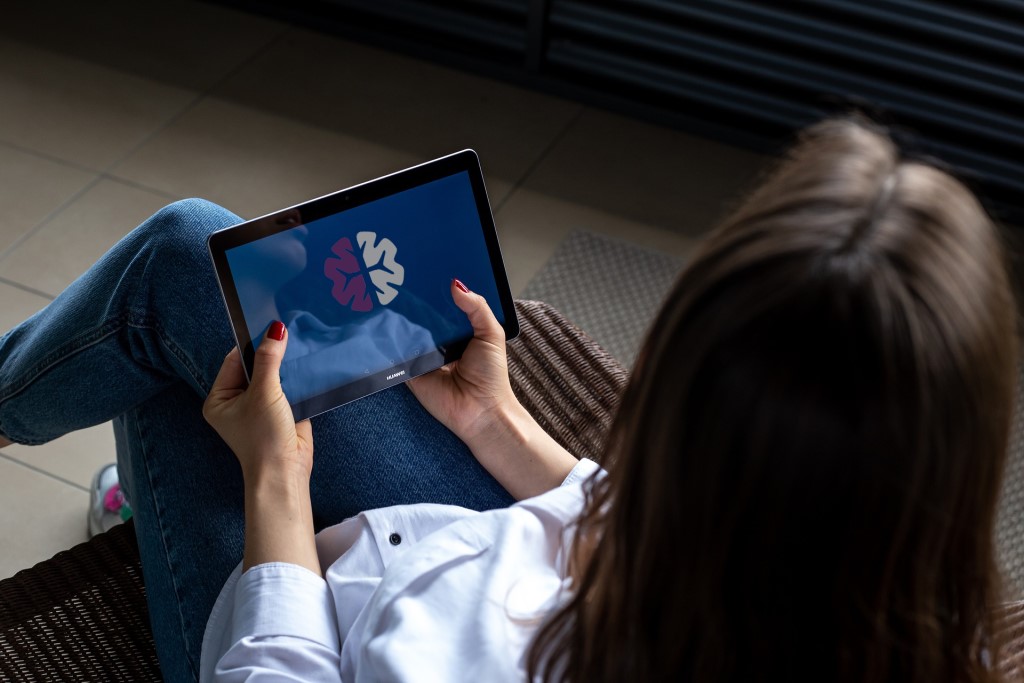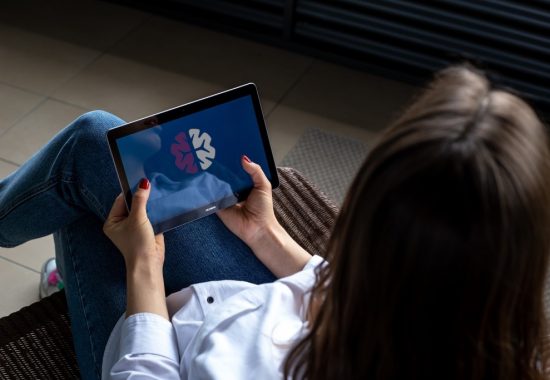
After a stroke, more than 80% of patients experience impaired motor function including weakness and poor coordination. Unfortunately, these impairments commonly become chronic conditions that may reduce participation and quality of life for stroke survivors. Despite the benefits that rehabilitation can provide, barriers such as cost, lack of transportation, poor adherence, and other factors may prevent individuals with stroke from accessing sufficient amounts of therapy to maximize their recovery. Adding the ongoing COVID-19 pandemic to the list of potential barriers to therapy, investigations into the efficacy of remote rehabilitation treatments for stroke are critical.
The Human Motor Recovery Laboratory at Moss Rehabilitation Research Institute (MRRI) is dedicated to using technology to improve recovery in stroke and other neurological conditions. One line of research led by lab director Dylan Edwards, PhD, in conjunction with MossRehab (Alberto Esquenazi, MD) and California Rehabilitation Institute (Steven Cramer, MD), is focused on developing and evaluating home-based telerehabilitation therapies to improve motor recovery after stroke.
Telerehabilitation has become more widely available across the United States and around the world, and it may help people with stroke overcome barriers and achieve higher doses of therapy to improve outcomes. Dr. Edwards and collaborators recently published the results of a large-scale multi-site randomized noninferiority clinical trial comparing the efficacy of home-based telerehabilitation therapy to therapy delivered in the clinic for adults in the acute phase (4 to 36 weeks) post-stroke. The treatment targeted arm movement and included an education component as well. A total of 124 patients participated across eleven different sites in the United States. The intervention involved 36 sessions of motor therapy and stroke education delivered over six weeks, and each session was 70 minutes in duration.
Strengths of this particular study are that the intensity, duration, and frequency of therapy were matched across the home-based and in-clinic groups, and the interventions included stroke education to address gaps in knowledge that may impact recovery and prevent secondary stroke. The results showed that arm function, as measured by the Fugl-Meyer Assessment, improved significantly and with a clinically important change in both groups. The home-based telerehabilitation intervention was not inferior to the in-clinic intervention. In addition, the telerehabilitation intervention was found to be safe, it was well-received by participants, and adherence was excellent.
The study conducted by Dr. Edwards and colleagues was included in a recent Cochrane review examining telerehabilitation for people with stroke more broadly. The main goal of this review was to determine whether individuals with stroke are better able to perform activities of daily living following telerehabilitation compared to in-person rehabilitation or usual care. The review included 22 studies with a total of 1,937 participants. Of these 22 studies, the work by Dr. Edwards and colleagues was one of only three studies to be determined by the authors to have the highest methodological quality based on a low risk for all six potential types of bias assessed. However, overall evidence across studies was only low- to moderate-quality, and differences between studies in terms of interventions and outcomes made it difficult or not appropriate for the reviewers to pool data. Though preliminary evidence suggests that people who received telerehabilitation had similar outcomes for activities of daily living compared to those who received in-person rehabilitation or usual care, additional research is needed to draw more definitive conclusions.
Telerehabilitation for recovery post-stroke is an active and evolving field of research, and many questions remain to be answered. The recent clinical trial conducted by Dr. Edwards and colleagues focused on rehabilitation of arm movements in people with stroke, but further research is needed to understand the efficacy of home-based therapies for other aspects of movement as well as for language and memory. It will also be important to compare the costs of home-based versus in-clinic therapies. Dr. Edwards is honored to be making important contributions to this impactful area of rehabilitation research, and he looks forward to continuing to conduct exceptional, high-quality studies to further improve outcomes for individuals with stroke through technology such as telerehabilitation.


11 comment on “Telerehabilitation to Make Treatment More Accessible for People with Stroke”